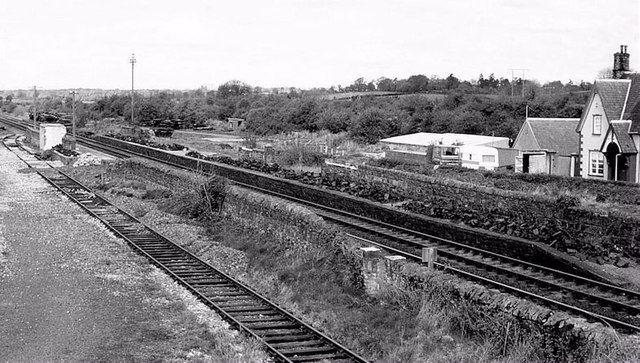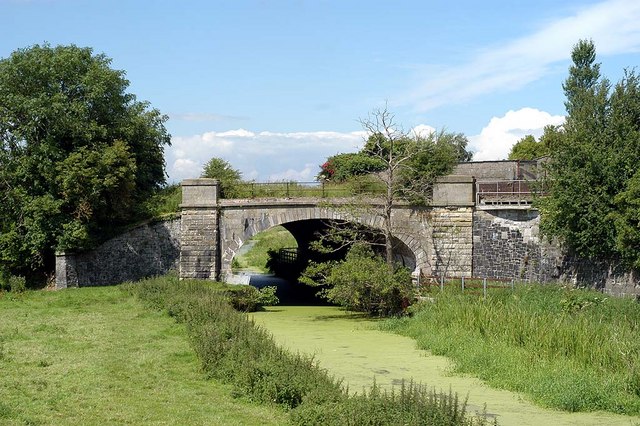|
Northern Railway Of Ireland
Northern Railway of Ireland was an Irish gauge railway company in Ireland. It was formed by a merger of the Dublin and Drogheda Railway (D&D) with the Dublin and the Belfast Junction Railway (D&BJct) in 1875. In 1876 it merged with the Irish North Western Railway (INW) and Ulster Railway to form the Great Northern Railway (Ireland) The Great Northern Railway (Ireland) (GNR(I) or GNRI) was an Irish gauge () railway company in Ireland. It was formed in 1876 by a merger of the Irish North Western Railway (INW), Northern Railway of Ireland, and Ulster Railway. The government .... Railway companies established in 1875 Railway companies disestablished in 1876 Irish gauge railways Great Northern Railway (Ireland) Defunct railway companies of Ireland {{Europe-rail-transport-stub ... [...More Info...] [...Related Items...] OR: [Wikipedia] [Google] [Baidu] |
Irish Gauge
Railways with a track gauge of fall within the category of broad gauge railways. , they were extant in Australia, Brazil and Ireland. History 600 BC :The Diolkos (Δίολκος) across the Isthmus of Corinth in Greece – a grooved paved trackway – was constructed with an average gauge of . 1840 : The Grand Duchy of Baden State Railway was constructed in 1840-1851 to gauge before being converted to in 1854–1855. 1843 : The Board of Trade of the United Kingdom of Great Britain and Ireland, after investigating a dispute caused by diverse gauges, recommended the use of in Ireland. 1846 : The Regulating the Gauge of Railways Act 1846 made mandatory throughout all of Ireland. 1847 : The Swiss Northern Railway was opened as a line and converted to in 1854. 1854 : The first Australian railway to operate steam-powered freight and passenger services, Melbourne and Hobson's Bay Railway Company, was built as a line. 1858 : The first Brazilian railway was opened: ... [...More Info...] [...Related Items...] OR: [Wikipedia] [Google] [Baidu] |
Ireland
Ireland ( ; ga, Éire ; Ulster Scots dialect, Ulster-Scots: ) is an island in the Atlantic Ocean, North Atlantic Ocean, in Northwestern Europe, north-western Europe. It is separated from Great Britain to its east by the North Channel (Great Britain and Ireland), North Channel, the Irish Sea, and St George's Channel. Ireland is the List of islands of the British Isles, second-largest island of the British Isles, the List of European islands by area, third-largest in Europe, and the List of islands by area, twentieth-largest on Earth. Geopolitically, Ireland is divided between the Republic of Ireland (officially Names of the Irish state, named Ireland), which covers five-sixths of the island, and Northern Ireland, which is part of the United Kingdom. As of 2022, the Irish population analysis, population of the entire island is just over 7 million, with 5.1 million living in the Republic of Ireland and 1.9 million in Northern Ireland, ranking it the List of European islan ... [...More Info...] [...Related Items...] OR: [Wikipedia] [Google] [Baidu] |
Dublin And Drogheda Railway
Dublin and Drogheda Railway (D&D) was a railway company in Ireland which publicly opened its 31¾ mile main line between Dublin and Drogheda in May 1844. It was the third railway company in Ireland to operate passenger trains and the first to use the Irish standard gauge. It later opened branches to Howth and Oldcastle. The opening of the Dublin and Belfast Junction Railway (D&BJct) between the D&D at Drogheda and the Ulster Railway (UR) at Portadown in 1852 saw an almost continuous main line connection between Dublin and Belfast, which was resolved by the official opening of the Boyne Viaduct in April 1855. Amalgamations between these and other companies in 1875 and 1876 saw the creation of the Great Northern Railway of Ireland GNR(I). Origins In 1836 the D&D presented the scheme to parliament to construct the railway line between Dublin and Drogheda and it successfully received royal assent on 13 August 1836. Despite support of eminent engineers for the coastal route some ... [...More Info...] [...Related Items...] OR: [Wikipedia] [Google] [Baidu] |
Dublin And The Belfast Junction Railway
Dublin and the Belfast Junction Railway (D&BJct, Irish: Iarnród Bhaile Átha Cliath agus Acomhal Bhéal Feirste) was an Irish gauge () railway in Ireland. The company was incorporated in 1845 and opened its line in stages between 1849 and 1853, with the final bridge over the River Boyne opening in 1855. It linked the Ulster Railway (UR) from Belfast to Portadown and Dublin and Drogheda Railway (D&D) from Drogheda to Dublin, completing the missing link in the Belfast–Dublin line. History The Boyne Viaduct at Drogheda was not built until 1854–55, at a cost of £124,000, to the design of Sir John Macneill, who was the consulting engineer for the D&BJct. Route The D&BJct line from Drogheda to Portadown connected the Ulster Railway's – – Belfast original line with the Dublin and Drogheda Railway's Dublin Amiens Street – Drogheda line, forming the main line between Dublin and Belfast. Aftermath In 1875, the D&BJct merged with the Dublin and Drogheda Railway (D&D) ... [...More Info...] [...Related Items...] OR: [Wikipedia] [Google] [Baidu] |
Irish North Western Railway
Irish North Western Railway (INW) was an Irish gauge () railway company in Ireland. Development The company was founded as the Dundalk and Enniskillen Railway (D&ER) and opened the first section of its line, from to , in 1849. In Dundalk the D&ER line crossed the Dublin and Belfast Junction Railway main line, which was completed between and its own separate station in the same year. The D&ER extended westwards, reaching in 1854, in 1855 and in 1858. In 1859 the D&ER reached where it connected with the Londonderry and Enniskillen Railway (L&ER). The L&ER had been completed in 1854 but had been unprofitable, so in 1860 it leased its line in perpetuity to the D&ER. This gave the D&ER a direct route between Dundalk and . In 1862 the INW opened a branch from southwards to . In the same year the company renamed itself the Irish North Western Railway. In 1863 the Ulster Railway reached Clones where it made a junction with the INW. In 1868 the Enniskillen and Bundoran Railwa ... [...More Info...] [...Related Items...] OR: [Wikipedia] [Google] [Baidu] |
Ulster Railway
The Ulster Railway was a railway company operating in Ulster, Ireland. The company was incorporated in 1836 and merged with two other railway companies in 1876 to form the Great Northern Railway (Ireland). History The Ulster Railway was authorised by an Act of the UK Parliament in 1836 and construction began in March 1837. The first of line, between and , were completed in August 1839 at a cost of £107,000. The line was extended in stages, opening to in 1841,Hajducki, 1974, map 9 in 1842,Hajducki, 1974, map 8 and in 1848. In 1836 a Railway Commission recommended that railways in Ireland be built to broad gauge. The Ulster Railway complied with this recommendation but the Dublin and Drogheda Railway (D&D) did not. In order for Dublin and Belfast to be linked without a break-of-gauge, in 1846 the UK Parliament passed an Act adopting a compromise gauge of for Ireland, to which the Ulster Railway's track was then re-laid. Extension of the Ulster Railway resumed, reachi ... [...More Info...] [...Related Items...] OR: [Wikipedia] [Google] [Baidu] |
Great Northern Railway (Ireland)
The Great Northern Railway (Ireland) (GNR(I) or GNRI) was an Irish gauge () railway company in Ireland. It was formed in 1876 by a merger of the Irish North Western Railway (INW), Northern Railway of Ireland, and Ulster Railway. The governments of Ireland and Northern Ireland jointly nationalised the company in 1953, and the company was liquidated in 1958: assets were split on national lines between the Ulster Transport Authority and Córas Iompair Éireann. Foundation The Ulster, D&D and D&BJct railways together formed the main line between Dublin and Belfast, with the D&BJct completing the final section in 1852 to join the Ulster at . The GNRI's other main lines were between Derry and and between Omagh and Portadown. The Portadown, Dungannon and Omagh Junction Railway together with the Londonderry and Enniskillen Railway enabled GNRI trains between Derry and Belfast to compete with the Belfast and Northern Counties Railway, and both this and the Dundalk route gave connectio ... [...More Info...] [...Related Items...] OR: [Wikipedia] [Google] [Baidu] |
Railway Companies Established In 1875
Rail transport (also known as train transport) is a means of transport that transfers passengers and goods on wheeled vehicles running on rails, which are incorporated in tracks. In contrast to road transport, where the vehicles run on a prepared flat surface, rail vehicles (rolling stock) are directionally guided by the tracks on which they run. Tracks usually consist of steel rails, installed on sleepers (ties) set in ballast, on which the rolling stock, usually fitted with metal wheels, moves. Other variations are also possible, such as "slab track", in which the rails are fastened to a concrete foundation resting on a prepared subsurface. Rolling stock in a rail transport system generally encounters lower frictional resistance than rubber-tyred road vehicles, so passenger and freight cars (carriages and wagons) can be coupled into longer trains. The operation is carried out by a railway company, providing transport between train stations or freight customer facilit ... [...More Info...] [...Related Items...] OR: [Wikipedia] [Google] [Baidu] |
Railway Companies Disestablished In 1876
Rail transport (also known as train transport) is a means of transport that transfers passengers and goods on wheeled vehicles running on rails, which are incorporated in tracks. In contrast to road transport, where the vehicles run on a prepared flat surface, rail vehicles (rolling stock) are directionally guided by the tracks on which they run. Tracks usually consist of steel rails, installed on sleepers (ties) set in ballast, on which the rolling stock, usually fitted with metal wheels, moves. Other variations are also possible, such as "slab track", in which the rails are fastened to a concrete foundation resting on a prepared subsurface. Rolling stock in a rail transport system generally encounters lower frictional resistance than rubber-tyred road vehicles, so passenger and freight cars (carriages and wagons) can be coupled into longer trains. The operation is carried out by a railway company, providing transport between train stations or freight customer faciliti ... [...More Info...] [...Related Items...] OR: [Wikipedia] [Google] [Baidu] |
Irish Gauge Railways
Irish may refer to: Common meanings * Someone or something of, from, or related to: ** Ireland, an island situated off the north-western coast of continental Europe ***Éire, Irish language name for the isle ** Northern Ireland, a constituent unit of the United Kingdom of Great Britain and Northern Ireland ** Republic of Ireland, a sovereign state * Irish language, a Celtic Goidelic language of the Indo-European language family spoken in Ireland * Irish people, people of Irish ethnicity, people born in Ireland and people who hold Irish citizenship Places * Irish Creek (Kansas), a stream in Kansas * Irish Creek (South Dakota), a stream in South Dakota * Irish Lake, Watonwan County, Minnesota * Irish Sea, the body of water which separates the islands of Ireland and Great Britain People * Irish (surname), a list of people * William Irish, pseudonym of American writer Cornell Woolrich (1903–1968) * Irish Bob Murphy, Irish-American boxer Edwin Lee Conarty (1922–1961) * Irish McCal ... [...More Info...] [...Related Items...] OR: [Wikipedia] [Google] [Baidu] |
.jpg)





